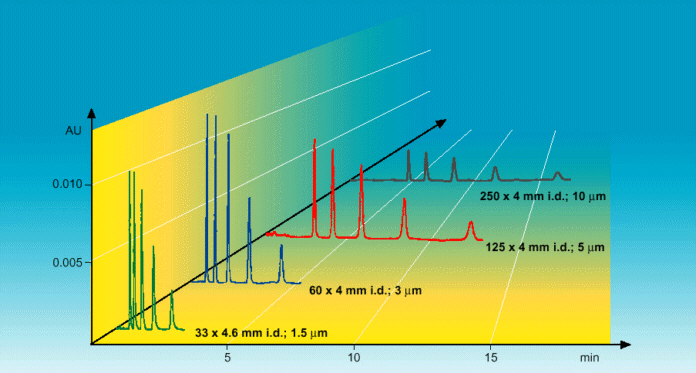| short analysis time - only 1/7 of standard HPLC | high sample through-put, i.e. tremendously reduced costs per analysis | ||
| low solvent consumption - only 1/5 of standard HPLC | cost saving + improved environmental compatibility | ||
| decreased diffusion /dispersion | increased sensitivity - > 2-fold - | ||
| increased performance, i.e. minimum band broadening- | higher number (N) of hight equivalents of theoretical plates (HETP) per meter - > 4.5-fold - |
